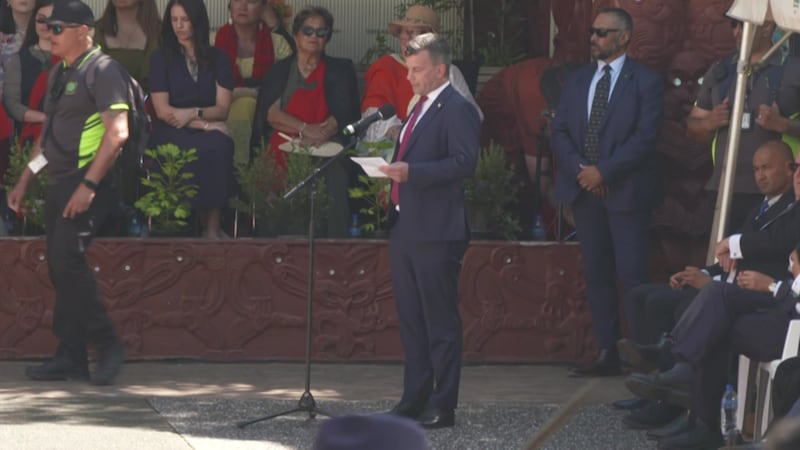Opinion: The Prime Minister is in London and is focused on boosting trade and strengthening ties with the UK, while questions about New Zealand’s future with the Crown and what that means for Te Tiriti remains unanswered.
It’s a beautiful Sunday morning, and thousands of eager onlookers pack the front of Buckingham Palace for the changing of the guard. A brass band fills the square with tunes that get feet tapping and whānau dancing.
It’s a whole vibe.
As a Māori and a son of the North, being there made me feel both lucky to witness the ceremony, but also uneasy.
On one hand, I was struck by the scale and spectacle; the guards in full uniform, the gleaming brass instruments, the towering statue of Queen Victoria presiding over it all. It was undeniably impressive.
It was hard not to admire the history and ceremony
But as an Indigenous person, I couldn’t ignore the weight of history that lingered in the air; the colonisation, the loss, the mamae. I was standing on the very ground where Kīngi Tāwhiao once came, seeking justice for the whenua raupatu, the confiscated lands of his people.
Pride met discomfort. A moment of internal conflict.
In that moment, I found myself circling back to a question that has echoed throughout our history: what does emancipation truly look like in the context of the Māori–Crown relationship?
On Monday, down the road at Windsor Castle, Prime Minister Christopher Luxon had an audience with King Charles to kick off his London and Türkiye programme.
The event was closed to the media, and while the details remain under wraps, a spokesperson for the PM said he “enjoyed discussing New Zealand issues with the King”.
Diplomatic, as expected. But it doesn’t explore the question at the back of some minds: what is Aotearoa New Zealand’s future with the monarchy?
Ardern, Hipkins, and Luxon have all said that New Zealand will eventually become a republic. Yet none have taken steps to make that future real. Instead, they continue to reaffirm ties with the Crown.
To be fair, constitutional reform is no easy task. It’s politically risky, as any such move must place Te Tiriti o Waitangi at the centre. That alone is a challenge, especially in the current political climate.

The divisive debate around the Treaty Principles Bill left Parliament weary. Disinformation clouded the conversation and deepened public divides. But that’s not a reason to retreat. It’s a reason to confront the issue with clarity and care.
We’re not short on guidance. The Matike Mai Aotearoa report offers a thoughtful, indigenous-led blueprint for change. It outlines a constitutional vision grounded in Te Tiriti, one that honours tikanga Māori and empowers all communities in Aotearoa to shape the future.
The real question now is: which government will have the courage to lead?
It’s time to move past sound bites and put real reform on the agenda. If Matike Mai isn’t seen as enough, then commission further research. Fund a working group. Start a proper public conversation.
Considering how much taxpayer money went into pushing a bill that never stood a chance of making it past second reading, surely, it’s not too much to ask for a bit of honest, resourced inquiry into our constitutional future.


